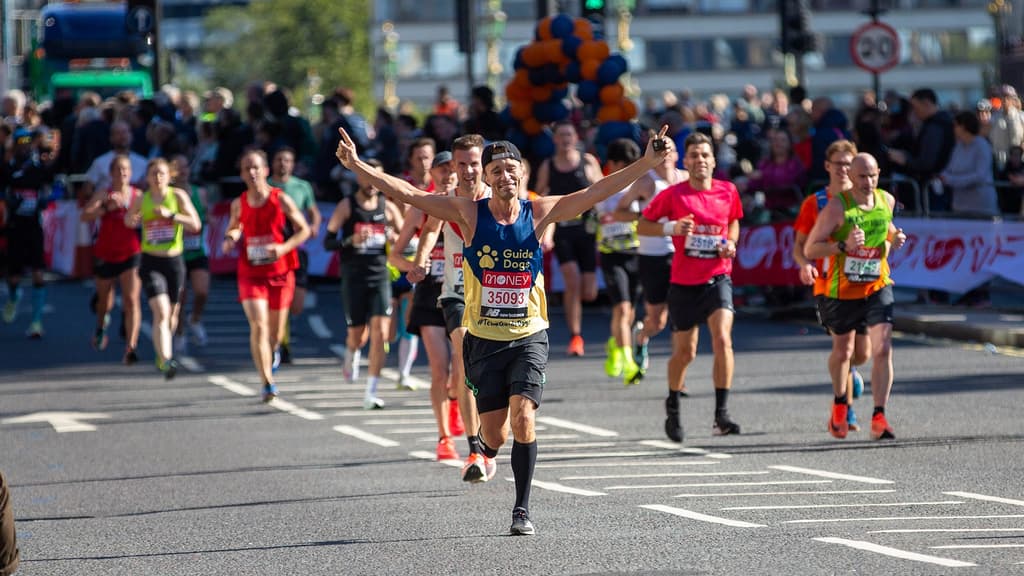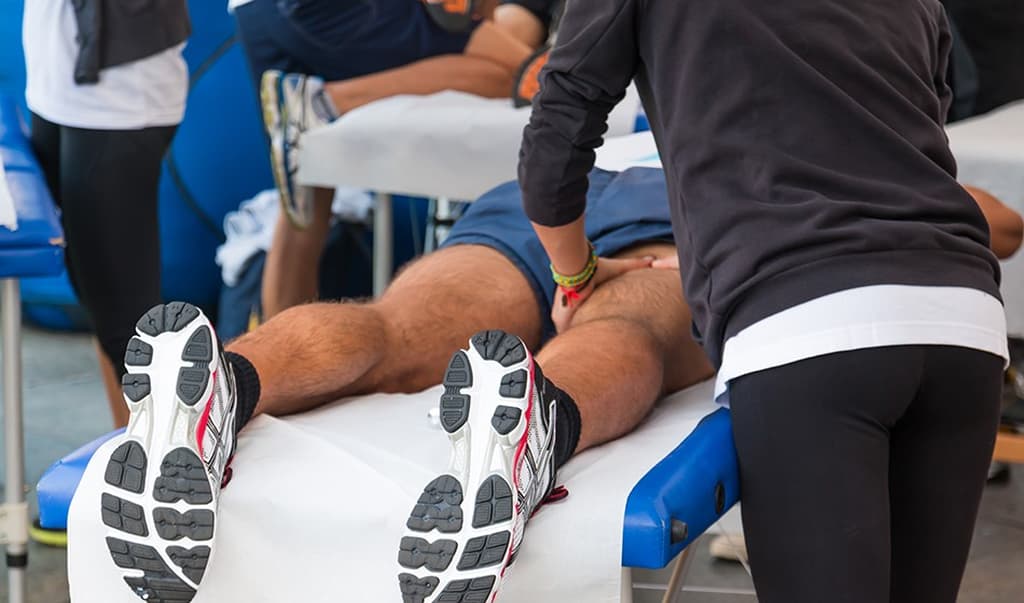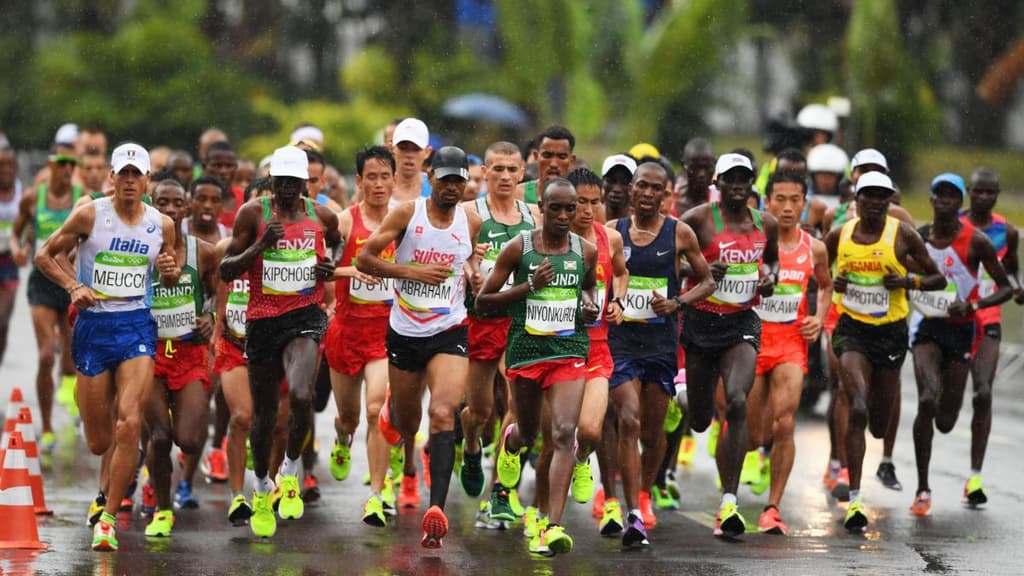How Marathon Runners Relax Between Workouts

Marathon running is a demanding sport that requires not only intense training but also effective recovery strategies. Understanding how to relax and recover between workouts is crucial for maintaining performance and preventing injuries.
This article explores various methods marathon runners use to relax and recover, ensuring they stay at the top of their game. From stretching and massage therapy to proper hydration and mental relaxation, discover the best practices for recovery.
Understanding the Importance of Recovery
Recovery is an essential aspect of a marathon runner’s training regimen. It allows the body to repair and strengthen itself, reducing the risk of injuries and enhancing overall performance. Ignoring recovery can lead to overtraining, fatigue, and burnout.
Proper recovery helps in rebuilding muscles, replenishing energy stores, and improving flexibility. It also supports mental well-being, which is vital for maintaining motivation and focus during training and races.
The Role of Rest Days
Rest days are crucial for marathon runners as they provide the body with an opportunity to heal and rejuvenate. These days should be strategically placed in the training schedule to allow for maximum recovery benefits. On rest days, runners should avoid strenuous activities and focus on gentle movements or complete rest.
One of the online casino methods marathon runners might explore during rest days is engaging in light mental activities such as playing online casino games. This can help them unwind and divert their mind from the physical strain of training, contributing to mental relaxation.
Effective Stretching Techniques
Stretching is a fundamental component of recovery for marathon runners. It helps improve flexibility, reduce muscle stiffness, and enhance blood circulation. Incorporating dynamic stretches before workouts and static stretches after can significantly aid in recovery.
Some effective stretching techniques include hamstring stretches, calf stretches, and hip flexor stretches. These stretches target key muscle groups used during running, ensuring they remain flexible and less prone to injuries.
Incorporating Yoga for Flexibility and Relaxation
Yoga is an excellent practice for marathon runners, offering benefits such as increased flexibility, improved breathing, and mental relaxation. Regular yoga sessions can help runners develop better body awareness and balance.
Yoga poses like downward dog, pigeon pose, and child’s pose are particularly beneficial for runners. These poses stretch the muscles, relieve tension, and promote relaxation, making them an integral part of a recovery routine.
The Benefits of Massage Therapy
Massage therapy is a popular recovery method among marathon runners. It helps alleviate muscle soreness, reduce inflammation, and improve circulation. Regular massages can also enhance muscle flexibility and promote relaxation.
Techniques such as deep tissue massage, sports massage, and trigger point therapy are highly effective. Incorporating these into a recovery plan can significantly improve a runner’s overall physical condition.
Utilizing Foam Rollers for Muscle Relief
Foam rolling is a self-myofascial release technique that helps relieve muscle tightness and improve blood flow. It is an affordable and effective way for runners to manage muscle soreness and prevent injuries.
Using foam rollers on areas like the quadriceps, hamstrings, and calves can break up muscle knots and promote faster recovery. Consistent foam rolling sessions are essential for maintaining muscle health and flexibility.
Hydration and Nutrition for Recovery

Proper hydration and nutrition are vital for marathon runners’ recovery. Replenishing lost fluids and electrolytes is crucial for maintaining performance and preventing dehydration. Runners should drink plenty of water and consume electrolyte-rich beverages.
Nutritionally, a balanced diet rich in carbohydrates, proteins, and healthy fats supports muscle repair and energy replenishment. Foods like lean meats, whole grains, fruits, and vegetables should be staples in a runner’s diet.
Importance of Quality Sleep
Quality sleep is one of the most important recovery tools for marathon runners. During sleep, the body undergoes repair processes, and hormones essential for muscle growth and recovery are released. Runners should aim for 7-9 hours of sleep per night.
Creating a conducive sleep environment, maintaining a consistent sleep schedule, and avoiding caffeine and electronic devices before bed can help improve sleep quality and, consequently, recovery.
Active Recovery: Light Activities to Stay Loose
Active recovery involves engaging in light activities that promote blood flow and muscle relaxation without causing additional strain. Activities such as walking, swimming, or cycling at a low intensity can be beneficial.
These activities help flush out lactic acid from the muscles and keep the body loose, reducing the risk of stiffness and soreness. Active recovery should be a regular part of a marathon runner’s routine.
Using Heat and Ice Therapy
Heat and ice therapy are effective methods for managing muscle pain and inflammation. Heat therapy, such as warm baths or heating pads, can relax muscles and improve blood circulation. It is best used before stretching or physical activity.
Ice therapy, including ice packs or cold baths, helps reduce inflammation and numb pain. It is particularly useful after intense workouts or if there is swelling. Combining both therapies can enhance recovery benefits.
Mental Relaxation and Stress Management
Mental relaxation is just as important as physical recovery for marathon runners. Techniques such as meditation, deep breathing exercises, and mindfulness can help reduce stress and improve focus.
Managing stress effectively contributes to overall well-being and performance. Runners should incorporate mental relaxation practices into their daily routines to maintain a balanced and healthy mindset.

Playing Online Games
Aviator game offers an engaging gaming experience where players predict how long a virtual plane will fly before it disappears. To download, users should visit their device’s respective app store or the game’s official website, search for “Aviator,” and follow the prompts to install. The game’s intuitive interface and straightforward gameplay mechanics make it accessible to new players while still offering enough challenge to keep experienced gamers engaged. Once installed, players can immediately start testing their prediction skills and enjoy the thrill of the Aviator game.
The Role of Cross-Training in Recovery
Cross-training involves engaging in different types of physical activities to improve overall fitness and reduce the risk of overuse injuries. For marathon runners, activities like swimming, cycling, or strength training can be beneficial.
Cross-training helps build strength, endurance, and flexibility, enhancing overall performance. It also provides a mental break from running, keeping the training routine fresh and engaging.
Listening to Your Body: Knowing When to Rest
Understanding and listening to the body’s signals is crucial for marathon runners. Recognizing signs of overtraining, such as persistent fatigue, decreased performance, or mood changes, is essential.
Runners should not ignore these signals and take necessary rest when needed. Properly timed rest can prevent injuries and ensure long-term success in the sport.
